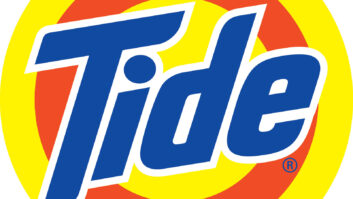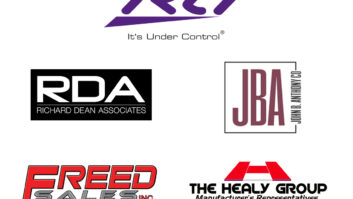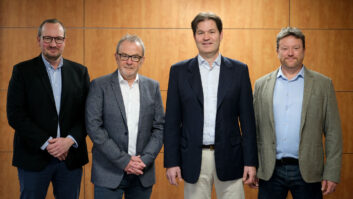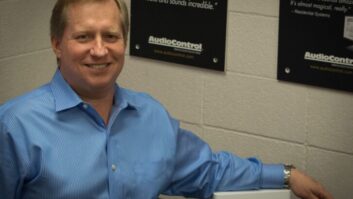NEW YORK —
Active soundbars have turned into a key
growth category for suppliers and retailers.
Sales are surging at all price points, including upperend
models priced around $1,000 and more. Average
selling prices so far this year are rising, and the category
is expanding the home audio market, suppliers and retailers
told TWICE.
Strong sales of Bose’s first two soundbars, despite
high price points of $1,499 and $2,499, are encouraging
multiple suppliers this year to launch their own
high-priced soundbars to complement the many models
priced less than $500, suppliers and retailers noted.
The success of Bose’s $1,499 system, said Pro-
Source president/CEO Dave Workman, “stretched the
boundaries of what dealers expected consumers would
accept,” and Bose’s success is having a halo effect on
sales of $699 to $799 bars, he added. “Bose is building
the business at $500 and up,” Workman continued.
The Bose products “showed that retailers don’t have to
be afraid of trying to sell soundbars above $500.”
As a result, he added, about a half dozen companies
later this year will launch soundbars at around
$999 and more. “Everyone’s revisiting their roadmap
because of Bose.”
Bose’s success “had an effect on manufacturers sitting
on the sidelines wondering if there was business
at the higher end,” agreed Al Baron, Polk product line
manager. Demand for the form factor “is so strong that
suppliers want to cover as many price points covered as
possible.”
In 2012, the Consumer Electronics Association
(CEA) forecasts a 117 percent surge in factory-level
soundbar sales to $485 million, propelling soundbar
sales to exceed HTiB sales for the first time. The
soundbar numbers include amplified and passive
soundbars lacking embedded DVD or Blu-ray players.
Factory-level HTiB sales will fall 15.9 percent in 2012
to $476 million, CEA forecast.
For its part, The NPD Group found retail-level soundbar
sales up 84 percent in dollars to $220 million for the 12
months ending March 2012.
“The majority of purchasers are new audio customers,”
claimed Polk’s Baron. Some soundbar sales come at the expense
of HTiBs, and some come at the expense of passive
sub/sat systems. Nonetheless, “a lot of the business is newly
generated business,” he said, because a soundbar is “the
only form factor that looks like it belong with a flat-panel TV”
and because “it’s for average consumers without a Ph.D.”
“Audio attachment is alive and well, but you have to get the
form factor and functions right,” Baron said.
Soundbars are for the non-hobbyist and non-audiophile
because they’re easy to set up and use and are visually unobtrusive,
Baron continued. At higher price points, including
the $800 price point planned for the company’s new Surroundbar
9000, the products appeal to consumers “who
want better audio without components,” he said. The bar will
join three current active Polk bars priced from $350 to $500.
Active bars are going
mainly into a home’s main
TV room but are also appearing
in secondary
rooms such as dens and
bedrooms, Baron noted.
Baron sees soundbars appealing
mainly to consumers who want to improve the sound quality
of a flat-panel TV, but at higher price points, Workman
sees some additional appeal. Below $500, the products are
primary TV-sound enhancers, but over that, dealers are selling
audio quality for music sources, not just for TV, he said.
At $699 to $799, dealers talk up better sound quality as
well as virtual surround. Systems at Bose’s prices “take the place of an HTiB system” because they’re an “easy-to-install
alternative solution with phantom surround and can be used
for music and TV.”
To tap into soundbar growth, companies such as Polk,
Harman Kardon, LG and P&F USA (Philips) have expanded
their soundbar selections, and to differentiate their products
from an influx of soundbars, companies are slimming down
their soundbars to take up less space, with Sharp offering a
new model that’s only 1 inch tall.
Sharp and Samsung have launched “convertible” models
with inserts that can also be removed to turn a horizontal
soundbar into two separate left-right vertical speakers sitting
atop their own stands. When the soundbars are placed
in a horizontal position, the inserts on the Sharp and Samsung
models can be replaced to
expand or reduce soundbar width
to match different-size TVs. For its
part, Panasonic launched a convertible
soundbar, but its horizontal
width is fixed.
A new technology appearing
in soundbars for the first time is
3D audio post-processing technology,
which turns up in two LG
soundbars to make sound leap
out from a 3D TV screen in sync
with the 3D image appearing on
screen. The LG technology “unburies” 3D spatial cues in a
soundtrack to correlate audio-image depth with the depth of
the on-screen 3D action. If objects or people leap out from
the screen, the sounds they make also move forward.
Also this year, multiple suppliers — including LG, Samsung
and Panasonic — are launching the industry’s first soundbars
with stereo Bluetooth technology, enabling consumers
to stream music wirelessly from any Bluetooth-equipped
smartphone or MP3/video player. Panasonic also uses stereo
Bluetooth to stream audio from select Panasonic TVs
equipped with Bluetooth.













